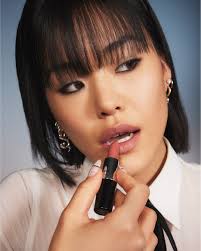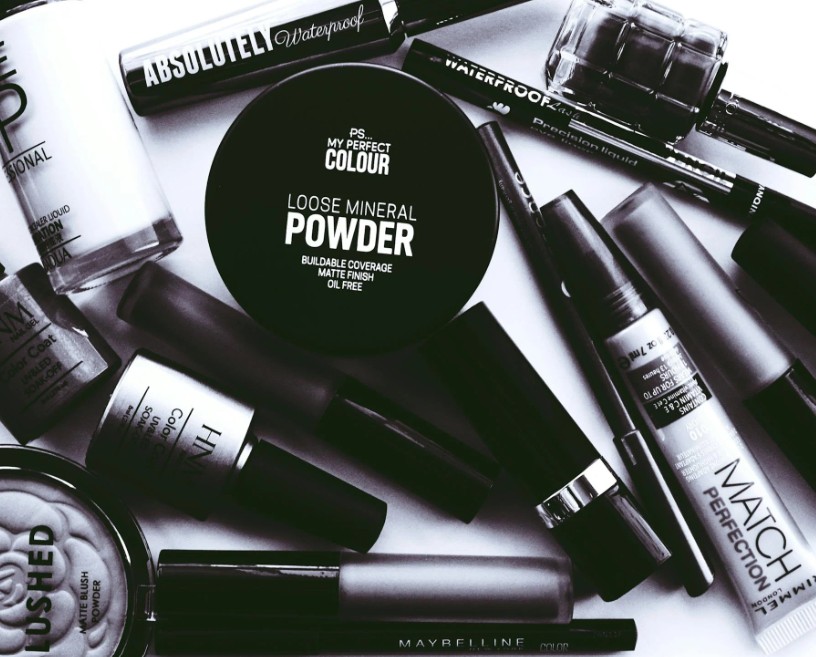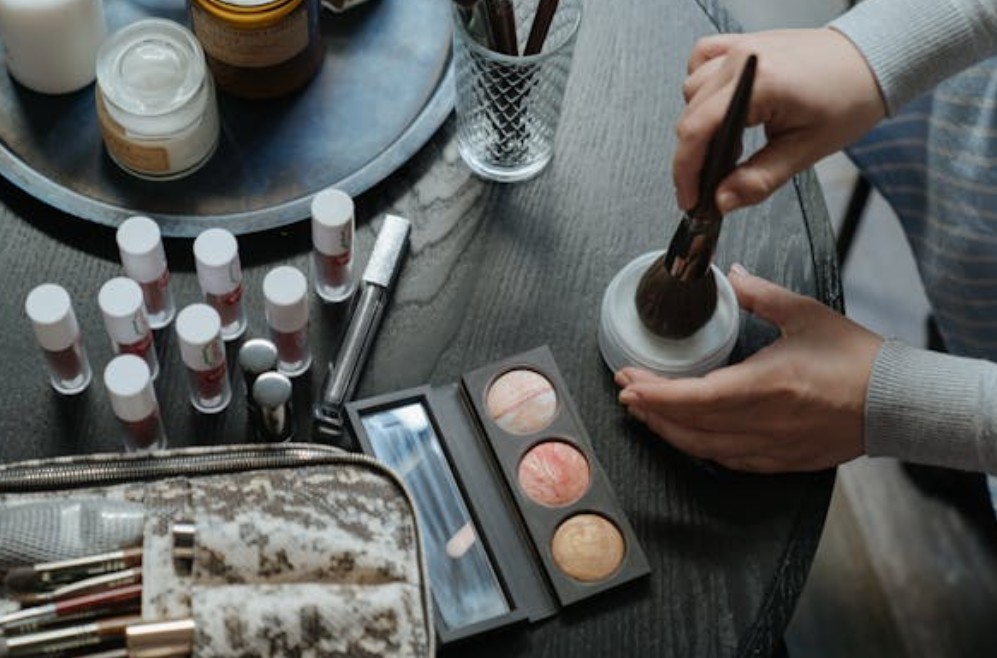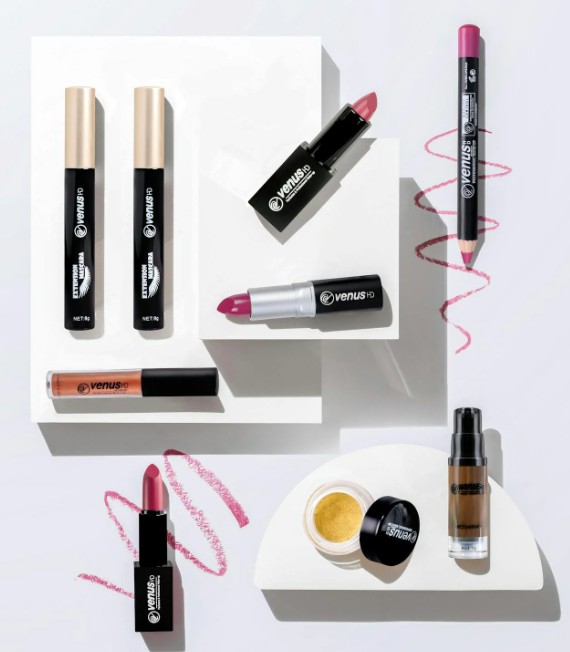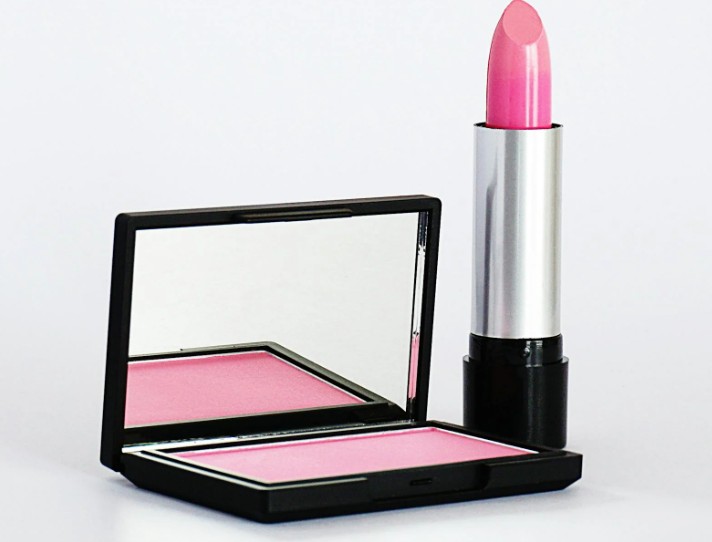
Trendy Cosmetics and the internet is a massive, fascinating place — filled with both unwanted opinions and surprisingly helpful tips. Somewhere in between? The countless search results for “products you should never use on your face.”
Since this is the internet, mixed opinions are bound to appear. One person praises a certain exfoliator, while another insists it destroyed their skin. Still, there’s widespread agreement online that these seven products are best avoided.
The reasons to steer clear of these scrubs, tools, and masks differ — some are overly harsh, some don’t actually work, and some simply fail to meet expectations.
Read more about Jodie Comer the vintage beauty
Read more about Stylish cosmetics
Yet they all share one crucial detail: none of them belong anywhere near your face.
1. St. Ives Apricot Scrub
Few beauty products of Trendy Cosmetics have experienced as dramatic and sudden a downfall as the once-beloved St. Ives Apricot Scrub.
This gritty exfoliator had a devoted following for years — until people realized it was doing more harm to their skin than good.
Back in 2016, St. Ives and its parent company, Unilever, faced a lawsuit alleging that the Trendy Cosmetics use of crushed walnut shells caused tiny tears in the skin, which could lead to irritation and even infection.
(Research has shown that fruit pits — which are similar in texture to walnuts — are far too harsh for delicate facial skin, especially when used on acne-prone areas.)
The bottom line
Most dermatologists agree that walnut scrubs aren’t safe for facial use by Trendy Cosmetics. Even though the lawsuit was eventually thrown out, the consensus online is clear: better to avoid it, no matter how nostalgic the scent might be.
If you still love the feeling of a scrub, opt for alternatives like biodegradable jojoba beads or finely milled corn powder, which smooth without damaging the skin.
2. Clarisonic Face Brush
The risks of over-exfoliation are real, and skin specialists warn that you should only exfoliate once or twice a week.
Doing it more frequently may cause serious irritation by Trendy Cosmetics — which is exactly what many former users of the Clarisonic Face Brush reported.
To clarify: The Clarisonic Face Brush is marketed as a “sonic cleanser,” not technically an exfoliator. Still, because it has stiff bristles that vibrate to scrub the skin, it inevitably provides some exfoliating action.
If you’re using the Clarisonic twice a day to chase that “super-clean” sensation, irritation can become a problem by Trendy Cosmetics. Back in 2012, one YouTube reviewer even described his Clari sonic journey as “six weeks of misery.”
Bottom line
Dermatologists generally approve sonic cleansing tools — but they aren’t suitable for everyone. People with stronger, less reactive skin may tolerate them a few times weekly, while those with delicate or sensitive skin are better off avoiding them completely.
3. Face wipes
Face wipes have often been promoted as the go-to shortcut for anyone who doesn’t want a full skincare routine. Magazines frequently recommend keeping them beside your bed for late-night makeup removal or stashing a pack in your car for quick clean-ups. Unfortunately, achieving a proper cleanse isn’t that simple.
When used regularly, makeup wipes can create friction that irritates the skin and may even cause tiny tears. Because they’re pre-moistened, these wipes also need a mix of preservatives and alcohol to stop bacteria and mold growth of Trendy Cosmetics — ingredients that aren’t exactly friendly to delicate skin.
Beyond skin concerns, disposable wipes are a major environmental issue. Most are produced from polyester, polypropylene, rayon, cotton blends, and similar materials that take decades to break down.
If you’re tossing one or more every day, that adds up to a significant amount of long-lasting waste.
The verdict
Even if your complexion doesn’t seem bothered by the rough texture or alcohol content, the environmental cost alone makes wipes a poor choice.
Still, going to bed with makeup on is never an option — so keep some micellar water and a washable cloth on hand. This duo is far gentler on your face and far kinder to the planet. (Just remember to do a complete cleanse the next morning.)
4. Cetaphil Gentle Cleanser
Trendy Cosmetics may be the most debated product on the list, since dermatologists frequently recommend Cetaphil as a staple for sensitive skin. But a closer inspection of its formula — and the criticism it gets online — tells a different story.
The cleanser contains only eight ingredients: water, cetyl alcohol, propylene glycol, sodium lauryl sulfate, stearyl alcohol, methylparaben, propylparaben, and butylparaben.
Of these, three are parabens, which have been linked to potential cancer risks, even though some research suggests the evidence is weak.
On top of that, five ingredients appear on the Environmental Working Group’s “Dirty Dozen” list for possible hormone disruption. Out of all of them, only water escapes concern.
The verdict
If you prefer “clean” skincare or want to avoid questionable chemicals, Cetaphil likely isn’t the right match.
For a safer and equally gentle alternative, try oil cleansing with a pure natural oil, like olive or jojoba, which can effectively remove dirt without unnecessary additives.
5. Bioré Pore Strips
Bioré Pore Strips, once a favorite for clearing blackheads, have recently faced scrutiny from knowledgeable skincare fans, and it seems their reputation won’t fully recover.
To clarify the facts: Bioré Pore Strips don’t actually break capillaries, despite what some beauty communities claim. They can, however, cause minor skin tearing (notice a pattern?) or aggravate sensitive skin types, such as those that are thin, dry, or prone to acne, when removed.
This is because the strips are very sticky, a property that comes from Polyquaternium-37—a chemical more commonly found in hair products like hairspray.
Final Take
While there’s something oddly satisfying about seeing the debris pulled out by a freshly peeled Bioré strip, dermatologists suggest that more conventional blackhead treatments may be gentler and more effective for your skin.
6. Boscia Luminizing Black Charcoal Peel-Off Mask
Around 2017, peel-off masks made with charcoal and adhesive, like the Boscia Luminizing Black Charcoal Peel-Off Mask, were extremely trendy—but fortunately, that craze didn’t last long.
After a viral “Charcoal Mask Disaster” video on YouTube, consumers began questioning the safety of these masks, prompting dermatologists and skincare experts to weigh in.
Although peel-off charcoal masks can help clear debris and impurities from pores, they also strip away healthy skin cells and fine facial hair, leaving skin sensitive and easily irritated.
Charcoal doesn’t distinguish between good and bad cells—so overuse can damage the skin’s natural barrier, similar to why ingesting charcoal while on medications is risky.
Final Take
A single use may not be catastrophic, but regular use of any peel-off mask can lead to irritation or other issues. Instead, try a clay mask (DIY options are easy) to safely absorb excess oil and refresh your skin.
- Glamglow Glittermask Gravitymud Firming Treatment Mask
Consider this one an Instagram trend. Glitter-packed face masks, like Glamglow’s Glittermask Gravitymud Firming Treatment Mask, enjoyed a brief viral moment a few years ago — but nowadays, a little sparkle isn’t enough to wow skincare aficionados.
Apart from harming the environment (glitter is a microplastic, too tiny to be caught in water treatment systems and ends up contaminating rivers and oceans), specialists warn that glitter particles can irritate and scratch the skin.
The takeaway
Glamorous selfies aside, glitter offers no real skincare benefits. Mud, however, actually works — so for a purifying, firming mask, Dead Sea mud is your best bet.
Protecting Your Skin
Your skin will thank you if you avoid harsh exfoliants and abrasive ingredients like crushed nutshells or glitter, products with high alcohol, preservatives, or parabens, and overly sticky items such as pore strips or peel-off masks.
Take care, fellow skincare lovers. When I first wandered into the skincare aisle as a kid, I thought the fancy bottles and enticing copy would instantly solve all my skin issues. Bonus points if the packaging had dramatic before-and-after images.
What I didn’t realize then was that skincare is far from universal. In fact, it’s usually the opposite — highly personal.
To figure out what worked for my skin, my routine, and my budget, I had to navigate psoriasis, uneven pigmentation, and the unrealistic expectation that I should look like a flawless doll.
Along the way, I discovered some methods that actually help and others that don’t. Most importantly, I’ve learned about eight skincare myths that prevent people from having a positive relationship with their skin.
This particular myth started in haircare and somehow migrated to skincare. Some brands even keep it alive by showing tiny fingertip amounts in their ads.
If you’re unsure, apply a little more than the recommended quantity on the bottle. Every face is different in size, texture, and absorbency.
Two drops of facial oil might overwhelm skin that’s naturally balanced but could be barely enough for dehydrated oily skin.
Tip: After a long day of touching your face, eating out, or picking up stray coins, your skin deserves more than just a dime-sized cleanse. The same goes for sunscreen, as most people only use about 25–50% of the recommended amount!
Having combination skin means I end up spending more on skincare, but I don’t splurge on every single item.
Sometimes a basic, budget-friendly product with fewer ingredients works better than a pricey one. For instance, I use Trader Joe’s Tea Tree Oil Facial Cleanser for $13.99, whereas my Lancome Bienfait Multivital SPF 30 moisturizer costs $60.
When I can’t justify the Lancome for the month, I switch to a Cetaphil moisturizer and Neutrogena Ultra Sheer sunscreen—both keep my skin looking amazing!
Pro tip: You can figure out where to spend your money by checking which key ingredients your favorite products contain and seeing if there are cheaper “dupes” with the same benefits. Skin advice often spreads through rumors, so be skeptical. You’ve probably heard, “Don’t touch your face to prevent breakouts,” but touching isn’t the only culprit.
My dermatologist explained that talking on the phone without earbuds and then touching your face can be risky, because phones carry more bacteria than most toilet seats.
A big clue to my past skin troubles appeared when I started wearing acrylic nails. Long nails can trap bacteria from your day, which can then spread to your face or even cause nail infections.
Following the same skincare routine every day won’t necessarily prevent breakouts. Pimples can be triggered by many factors, including gut health or stress.
Actually, sticking rigidly to a routine can sometimes backfire — changes in the weather, sudden stress, or your skin’s reaction to a product can all require you to adjust your regimen.
I like to maintain my core products, such as a cleanser, but modify other steps depending on my skin’s needs. For instance, I apply aloe vera gel under my moisturizer in spring, and switch to a lighter moisturizer in summer to avoid looking greasy under the sun.
Tip: Let your curiosity guide you and experiment with new products or formulations. Don’t worry about return policies — most brands understand that skincare isn’t universal and are happy to accept returns. Your skin is unique. Just because a trending “clear skin” post is popular on social media doesn’t mean you need to try a lemon-and-baking-soda mask on a whim.
The goal is to avoid shocking your skin. Research suggests it can take anywhere from 6 to 20 weeks to notice visible improvements, depending on the ingredients and your skincare goals.
Tip: When checking reviews, look at the 3- to 4-star ratings for a more realistic perspective. The most helpful reviews are those showing before-and-after results on someone with a similar skin tone, type, and concerns as you.
